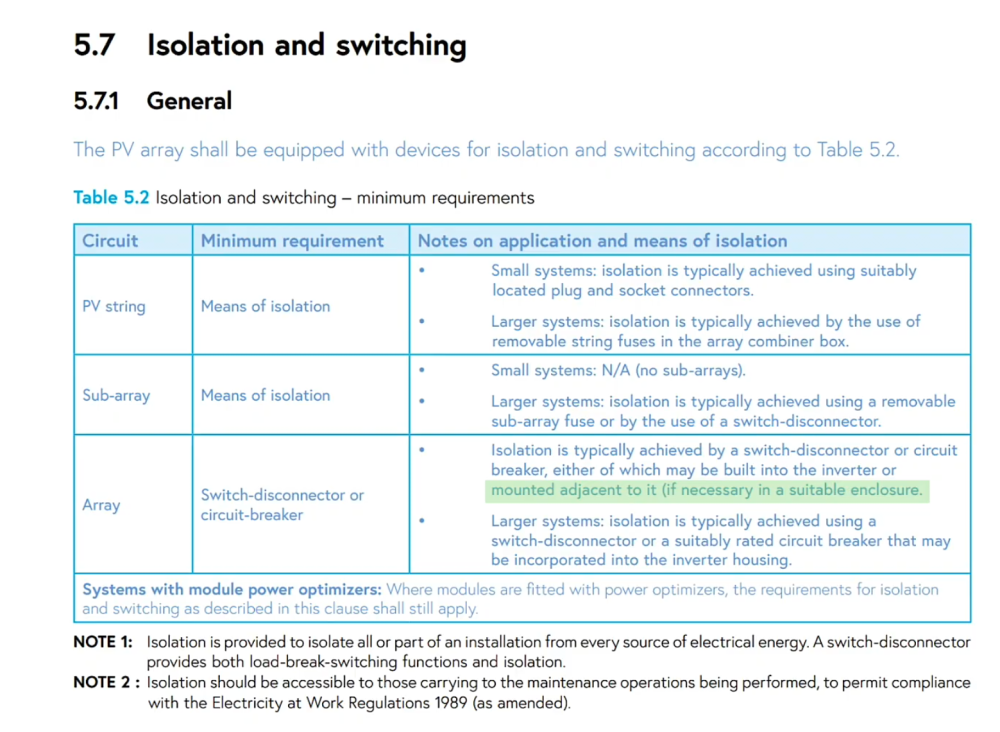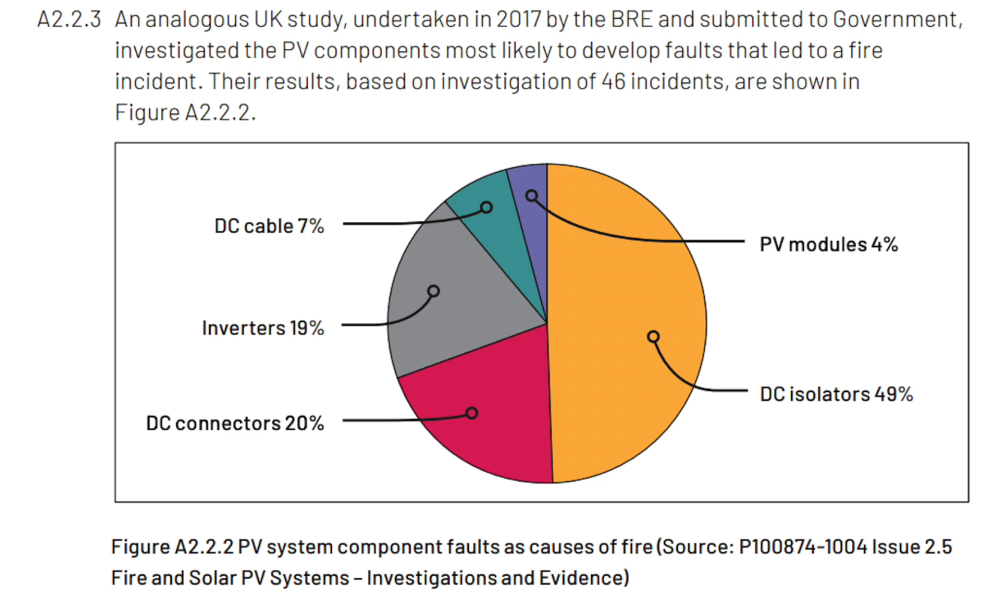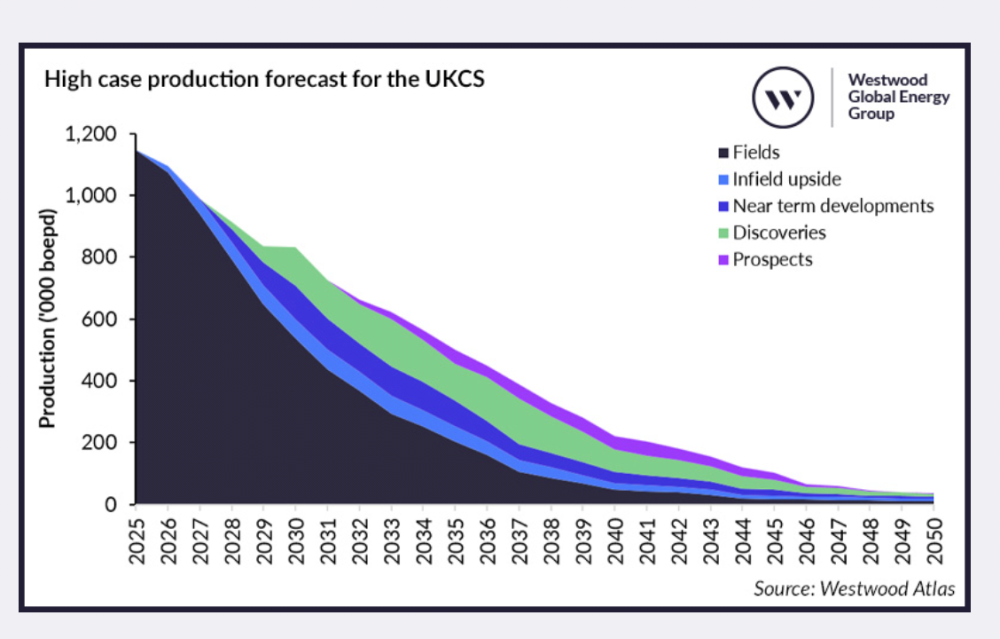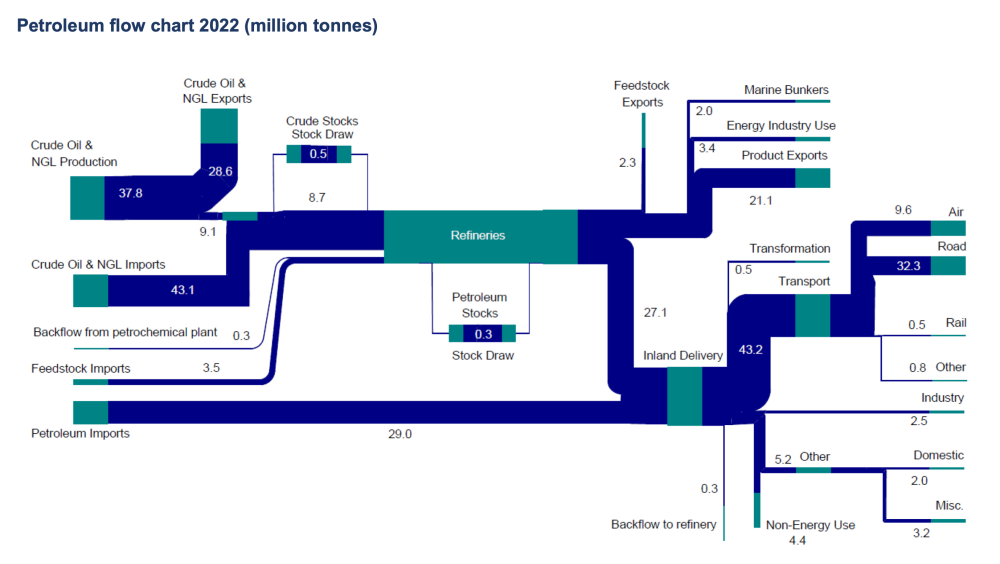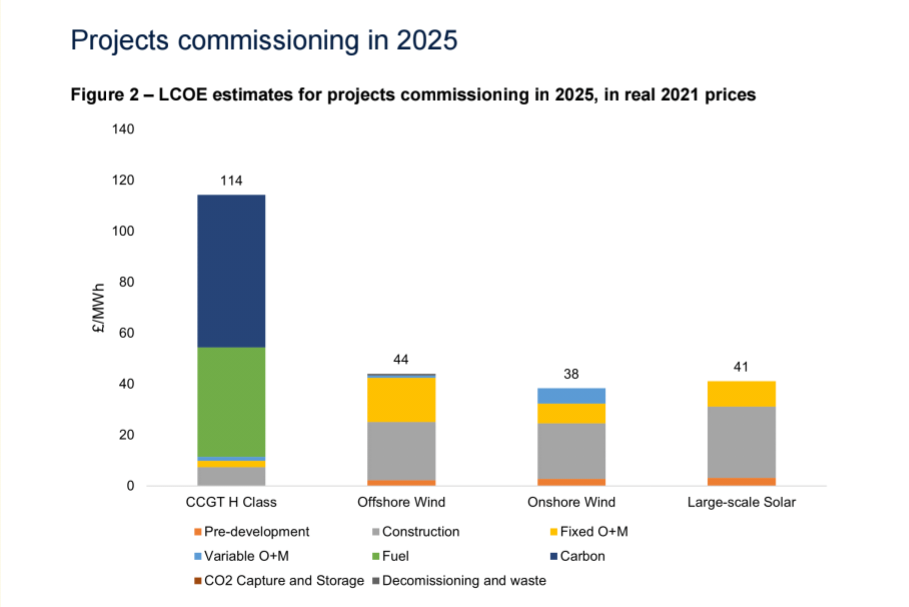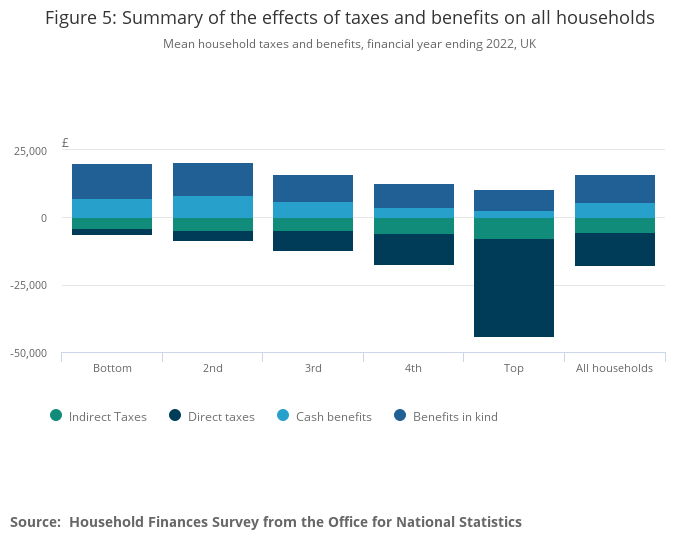
Beelbeebub
Members-
Posts
1048 -
Joined
-
Last visited
-
Days Won
3
Everything posted by Beelbeebub
-
Yes, that's the point. The minimum output often quoted by manufacturers is often achieved at the coldest temps when it is irrelevant. The relevant figure is minimum at the higher outdoor and that is a lot higher for the reasons you mention. I can't remember which brand it was (it might have been a mitsubishi or maybe a york) that I looked at but the minimum "spring" output was something like 5kw whilst the depths of winter max output was 10kw. So the effective modulation was 2:1.even though it could output 12kw max (in spring) and as little as 3kw in winter. (4:1)
-
One of the things about heatpump modulation is that, unlike boiler modulation, it's very dependent on air and flow temperature A HP might have a max of 12kw at 7C outside air and 35C flow. And a minimum output of 3kw at - 5C outside and 65C inside. But that doesn't really mean it has a 4:1 modulation We really need the opposite, the minimum at 7C/35C (or better yet 15C/30C) and the maximum at - 5C/65C Often that figure is closer to 2:1 Which is why sizing for just being able to do the job on the coldest days is prob best as you will. Have many more days where you are bumping into to lower modulation limit.
-
This is exactly the point. The exact performance of any unit will vary by location even for nominally identical properties. Each manufacturer will optimise for slightly different conditions. Model Y from brand X might be slightly better paper than Model A from Brand B, but in the exact conditions (even down to how thr occupier uses it) of a given install the latter might perform slightly better I think chasing the last few % of efficency by looking at the scant data given by most manufacturers is a bit of a losing battle.
-
Shouldn't the sizing include defrost and DHW as well though? If you heat demand on your coldest day is 7kw continuous, because you will spend some time defrosting (say 15% of the time) you need to up you actual output, then you'll be 2 or 3 hours heating hot water. So up again. So your 7kw house might need a 9kw or 10kw at -5C hear pump. But it will only need that for a day or two a year. The rest of the time it'll be running at maybe 75% "full throttle" until you get to late spring or early autumn when your lower modulation limit becomes more important. The choice of HP will constrained by other factors like local availability and expertise, physical size, price, warranty, aesthetics etc.
-
The rating of a Heatpumps is a bit subjective anyway. Indint think you can generalise. Manufacturers make a series of differently sized machines, but the actual "rating" varies from manufacturer to manufacturer and market to market (due to climate variations) So a 6.5kw machine in the UK might only be 5kw in Sweden and 8kw in southern France. Some manufacturers quote the max power at 7C outside and others at -5C. So the way manufacturer A's range falls might make the smaller units more efficent, whilst manufacturer B's range has the larger units more efficent. As a rule of thumb the bigger the evaporator is, in relation to the load, the more efficent a HP can be and the physics of the rotary, scroll and swing compressors makes efficencies drop off markedly in low load regions.
-
I think the evaporator coil size to power output makes a difference too. You quite often see the smaller of the two outputs using the same "frame" size is more efficient.
-
Surge protection, fuses and MCBs in loft from PV array.
Beelbeebub replied to jimseng's topic in Photovoltaics (PV)
There is a whole shutdown sequence including shutting down the bms etc etc. My point being it's fairly easy as all the isolators (AC and DC) switches and buttons are in one place. If there is a loft isolator, before it can be turned the operator has to go down stairs do the various operations before coming back up. There is, unless the isolator is locked on, a fair chance someone will just turn the knob possibly under full load. Much less likely if the isolation requires opening a box (with a tool) and then using another tool to disconnect the MC4s -
Surge protection, fuses and MCBs in loft from PV array.
Beelbeebub replied to jimseng's topic in Photovoltaics (PV)
The end panels of each string will generally (but not always) come with factory MC4 connectors. The "tail" is not normally very long, depending on your positioning and roof construction you might have to join on to those outside on the roof. If you were desperate to have a "disconnection" point on the loft, might the solution be to have a fairly large enclosure with the DC cables coming in from the roof (having connected with the tails on the roof via MC4), through a gland and then terminate with MC4 connectors. Those then fit to mating connectors on thr DC cables running through the house (either in ducts or as wire armoured) to the inverter. That enclosure could then be closed or even locked and a warning label stuck on it. That would seem to be allowed by the table I posted. That would allow for the through house run to be isolated and use crimped, approved and maintainance free connections all around. Assuming your inverter has the correct DC isolator built in. My inverter has instructions to turn the inverter off (shutdown) before using the isolator ie the isolator and connectors should never be operated under load. If there is no current flowing there won't be an arc. -
Surge protection, fuses and MCBs in loft from PV array.
Beelbeebub replied to jimseng's topic in Photovoltaics (PV)
Yes, you are correct - normal SWA won't do. You do need to be able to isolate the DC supply from the inverter but you *don't* need a separate DC isolator *if* your inverter has a suitible one built in (which most modern ones do) (The Institution of Engineering and Technology - Code of Practice for Grid-connected Solar Photovoltaic Systems) Statistically speaking, DC isolators have been the biggest cause of fires. And as such the latest guidence says to avoid them (as long as you have a built in one). https://www.thefpa.co.uk/advice-and-guidance/free-documents?q=RC62 Recommendations for fire safety with PV panel installations -
Looks like the party is over....
Beelbeebub replied to Beelbeebub's topic in Air Source Heat Pumps (ASHP)
I was sold on the need to shift as much from fossil fuels to renewables as possible because of the climate arguments but the real clincher was the declining production. I had thought that it was a straight pick between 2 options: A) continue a fossil fuel economy (and co2 emissions) dependant on UK sourced fuels B) transition away from fossil fuels (and lower co2) towards electricity that we get from wind and solar (which are also UK sourced) And you can argue back and forth about the choice between A and B depending on your views on CO2, the costs, the effect on the economy. But actually because of declining production, option A doesn't really exist Option A) is actually "to continue a fossil fuel economy (and co2 emissions) dependant on foreign sourced fuels" - in a Union Jack coat. And B) is your only option if you really care about the UK's energy security. -
Looks like the party is over....
Beelbeebub replied to Beelbeebub's topic in Air Source Heat Pumps (ASHP)
you say "strawman" alot but i don't believe I have "Substituting a person’s actual position or argument with a distorted, exaggerated, or misrepresented version of the position of the argument" I say your argument is that "Net Zero is bad for the UK and we should improve our energy security by increasing the production of our oil & gas" as evidenced by and... Is my summary of your position incorrect? My counter argument is that we cannot increase our oil and gas production levels because our resources are mature and declining. The other arguments about refinery capacity, ease of extraction and world market prices are secondary to this. As evidence I showed graphs from a government source and, just in case anyone were to say "well they would say that", an industry source. (industry source shown) Bear in mind that today (2025) we only produce about 50% of the O&G products we consume. If we go out a decade to 2035 we can see production will be at most about half today's, ie 25% of demand. The "at most" is important because that includes opening up new fields. You mentioned Rosebank and the optimistic production forecasts are in the region of 70,000 boe per day. As you can see from the graph that isn't even 10% of today's production, or 5% of today's demand. There is no scenario where we double O&G production from today's levels. Are you arguing that increasing our production by 5% in 10 years time will give us energy security? I argue that, to reduce our reliance on foreign (and often hostile) energy sources we need to: a) reduce demand - basically energy efficiency for heating, industry, transport b) reduce our consumption of the energy we cannot produce domestically (oil and gas) in favour of ones we can (electric from renewables but also nuclear) This coincides with the "net zero" policy. Far from stifling UK innovation, it will allow it to flourish in a new sector which is rapidly growing globally (renewables). Our expertise in hostile environment offshore operations will be very useful to the offshore wind industry. The O&G we do produce should be kept for things where it cannot be substituted (chemicals, some industry and aviation) - as has been pointed out the stuff is vital for the modern world, which is why we should be lighting it on fire unless we absolutely need to. -
Looks like the party is over....
Beelbeebub replied to Beelbeebub's topic in Air Source Heat Pumps (ASHP)
Yeah, being caught openly lying seems to have died a death. I think politicans have always lied but two recent politicians with notably stupid hair seem to have taken things to new heights. -
Looks like the party is over....
Beelbeebub replied to Beelbeebub's topic in Air Source Heat Pumps (ASHP)
I do my best and will bring facts and figures to the party when needed, for all the good it will do. -
Looks like the party is over....
Beelbeebub replied to Beelbeebub's topic in Air Source Heat Pumps (ASHP)
My other crazy position is that parliamentary votes should be secret ballots..... Hear me out..... We have secret ballots for elections for a reason. It makes buying someone's vote much harder. I could give you money and favours to vote for me, but you coukd vote for someone else and tell me you voted for me. I woikd have to trust you (the person selling their vote) to be honest! Now with bills and votes in parliament things are so complex that the average person has no easy way to know exactly what a bill does and whether a vote for or against it is the right thing in the long run. When you throw in parliamentary procedure it gets worse. Someone might vote against the "don't lower the kitten into a blender Act" because they want it to go back for amendments, or prefer the "don't put the kitten near a blender Act" instead rather than actually wanting to lower the kitten into a blender (though there are some MPs who would 100% want to blend a kitten) This provides fertile attack ground later on when opponents can shout "MP. X voted against saving the kitten!" with no context. Then you have whips who basically blackmail MPs to voting for thr party line even when the MPs don't want to. All of this would go away if you had secret ballots. MPs could vote according to what they thought right. Whips would be powerless to strong arm MPs - the MP could swear blind they voted for the party line. Business lobbies and shady types coukd bug cash in brown envelopes to MPs to vote one way, the MP could trouser the cash and vote the way they were going to anyway. So everyone, whips, constituents, lobby groups etc would have to just trust that the person they empowered with their vote. Which is sort of what we should be doing anyway. There is no point in giving the person our vote then looking over their shoulder at which way they voted when we aren't privy to all the circumstances that made them vote that way. I'm not totally mad. There would be a sealed record of how each MP voted (as there is with election votes). And those records would be made public (along with any public statement on which way they voted so we could judge their truthfullness) at the end of each following parliament or after an MP resigns. Effectively the MPs legacy is the thing that holds them in check long term. In the short term it's whether or not they can convince their constituents of they hold their interests at heart. I am aware that there are charlatans out there who seem able to convince turkeys to vote for Christmas or that they are men of the people despite being clearly of and for the entrenched establishment. But they seem to get voted for anyway. -
Looks like the party is over....
Beelbeebub replied to Beelbeebub's topic in Air Source Heat Pumps (ASHP)
One thing that would be good would be extending the "not lying in parliament" bit to all public statements by MPs. Anything that isn't obviously a private setting eg dinner with friends etc. So any press releases, comments at public events, conferences etc must not be lies and if found to be must be retracted and corrected at the earliest opportunity. Searchable web page on parliament website with all the corrections. House of commons library is given job as the arbiter of factual truth. -
Looks like the party is over....
Beelbeebub replied to Beelbeebub's topic in Air Source Heat Pumps (ASHP)
OK, Again on the energy security argument. The fossil fuel areas that the UK has access to are mature, that is to say they have past peak production. It costs about 3x to get a barrel of oil equiv (boe) out of the ground in the north Sea as it does in the Middle East. This ratio has been getting worse as the oil and gas fields produce less per well than they used to. Our refineries don't accept our oil, so we have to ship our crude abroad to be refined and import other countries crude for us to refine. Nitw how almost all our crude is exported and almost all our Refinery input is imported For gas the production situation is similar but there isn't the refinery issue. So for energy security we have a choice. A) we could increace our extraction which will result in much costlier oil and gas. This means we need to accept that burden on our economy or we need to subsidise the extraction. We then need to refit all our refineries to take this much more expensive feedstock and turn it into petrol, diesel etc. All of this woikd result in much higher prices for us in the UK and a huge drag on our economy. B) we could do the "green" thing - reduce demand for the things (oil and gas) we struggle to produce ourselves. So electrifying transport as much as possible, electrifying heating and industrial processes as much as possible. Also reducing demand by things like insulation, public transport etc. And replace the imported energy with energy produced in the UK like wind and solar (and nuclear etc). The only people who would benefit from A) are - foreign countries rich in oil and gas who would like to make money off us and have control over us ("do what we say or lights out") - oil and gas companies who would be able to make huge profits from the subsidies required to produce enough UK oil and gas. As it happens Reform have significant links to both those groups. It's rather convenient that their energy policy would be beneficial to a certain country who have been paying a close colleague/person he barely knew of the reform leader Right now, today the levelised cost per mwh of a new CCGT plant is higher than on and offshore wind and PV. If we ignore the carbon costs (dark blue) the CCGT is somewhere around £55, whilst the others are all below £44. Note the CCGT fuel costs assume world market prices and not the higher prices if we were to use only domestic gas. Crucially, the forward projections have the CCGT going up for projects built 2030,2035 etc, whilst the other ones are falling. To conclude : From a energy security perspective attempting to boost domestic extraction and refining would result in much higher energy costs for UK homes and businesses and/or huge taxpayer subsidies for the energy firms. Reducing our reliance on fossil fuels would reduce both our dependance on foreign supplies and our energy costs. -
ASHP with large thermal store (for load shifting)
Beelbeebub replied to apesort's topic in Air Source Heat Pumps (ASHP)
At these low battery storage prices I wonder how long before someone like octopus will install a battery system at your house for free, you pay an elevated standing charge but get upto 15kwh a day "included" then a higher unit price afterwards. The battery charges up under control of energy firm at various times when the wholesale price is really low. Say the kit (battery plus 10kw inverter) costs energy Co £5k installed and is 15kwh usable. We assume the kit will last 10 years. So. Energy Co. Need £500 a year capital, let's say £730 or about £2 a day. The usual price for 15kwh at 25p plus 50p.standing charge is £4.25 If the energy. Co offered £3.75 a day, they would have 1.75 to buy 15kwh of energy, abiut 11.5p a unit average over the year. I reckon thry could do that. They can already seem to afford to give EV owners 8p a unit. -
ASHP with large thermal store (for load shifting)
Beelbeebub replied to apesort's topic in Air Source Heat Pumps (ASHP)
I think the spec is for one "cornex" module The price is includes 16 of them so 16kwh. Crazy low price. Less than 3p a kwh over 6k cycles -
Looks like the party is over....
Beelbeebub replied to Beelbeebub's topic in Air Source Heat Pumps (ASHP)
Controversial opinion but I think the UK has always been and continues to be "well run". The doesn't mean it is perfect or that almighty cockups and scandals don't happen for too often. But we have centuries of a fairly professional civil service at many levels from local to national. What has changed (or maybe it hasn't) is that politicans seem less serious now. Once they would have sat down and had a 1h interview where they didn't doge questions and the difficulties of a given situation were explained. Now it's all on message soundbites and answering the question you wanted to be asked not the one you were asked. Remember, bashing the present and looking back to the past as a golden age has always been done. -
Looks like the party is over....
Beelbeebub replied to Beelbeebub's topic in Air Source Heat Pumps (ASHP)
I. Listened to an interview the other day with the outgoing CEO of national grid. I'm pretty sure he said they had a massive ramp up of projects to get the grid better suited to the new reality. Something like the typical number of major projects per 5 year period being one or two and itvs now 17 at a cost of £60bn He did say it would double the cost of the network to consumers (I can see the daily mail headline now!) He then clarified that the current cost is something like £25 year (so doubling to £50 a year) but they expected the work would lower the overall costs to consumers by £40. -
Looks like the party is over....
Beelbeebub replied to Beelbeebub's topic in Air Source Heat Pumps (ASHP)
I cannot think of a better way to allow a corrupt government to remain with a veneer of democracy. They simply have to depress the turnout (limited polling opening times, voter ID, disinformation etc) and voila! they are voted for overwhelmingly. Voter apathy and hopelessness is easy to manufacture. See: The counter to this is - "if voting were so useless, why would the rich and powerful spend so much to make you think it was?" -
Looks like the party is over....
Beelbeebub replied to Beelbeebub's topic in Air Source Heat Pumps (ASHP)
As for big businesses I saw an interesting take. The"paper clip problem" is a familiar thought experiment in AI. From wikipedia The scenario describes an advanced artificial intelligence tasked with manufacturing paperclips. If such a machine were not programmed to value living beings, then given enough power over its environment, it would try to turn all matter in the universe, including living beings, into paperclips or machines that manufacture further paperclips. Obviously we are very far away from inventing an AI capable of the above. It"s just a parable about the dangers of creating entities hyper focused on a single goal - like the sorcerer's apprentice with the brooms and buckets of water. Someone recently pointed out to me that we already have created those entities. Large companies are entities who's sole focus in maximising profits and everything else is secondary. Without restraint they will (and have in the past) destroy environments, overthrow governments, foster conflict, start wars. All to produce more profits. -
Looks like the party is over....
Beelbeebub replied to Beelbeebub's topic in Air Source Heat Pumps (ASHP)
In different ways yes to a degree. Doesn't make it a good thing or inevitable. I used to be relatively relaxed about the existence of billionaires but now my views are veering away, I'm increacingly struggling to see any that are a net benefit to the world. -
Looks like the party is over....
Beelbeebub replied to Beelbeebub's topic in Air Source Heat Pumps (ASHP)
And the bad thing about that is it puts your old aged eggs in one basket. If your kids get sick, die, don't get a well paid job etc. You're stuffed. -
Looks like the party is over....
Beelbeebub replied to Beelbeebub's topic in Air Source Heat Pumps (ASHP)
It's an all too short set of step from there to those that do have the vote starting to think they shouldn't look after those that don't vote. If your criteria for voting is "Net contributor to treasury" then you basically confine the vote to the top earning 40% of households. That is not a good idea for a just and stable society.

